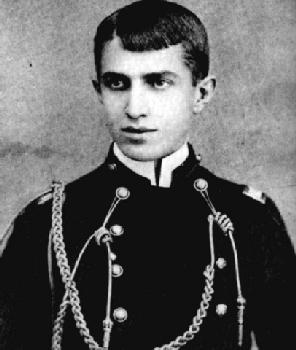

Melanie Freeman
English 48B
February 10, 2009
Stephen Crane: Maggie: A Girl of the Streets
Stephen Crane is known as one of the main proponents for the idea of naturalistic writing. Although his personal life was far different than the lives of his characters, Crane was able to produce writing with very dark, literal interpretations of the "depths of society" (7). Unfortunately, Crane's literary career was cut extremely short with his death by tuberculosis at the age of twenty-eight. However, his works such as Maggie: A Girl of the Streets still remain as accurate representations of the poverty stricken environments many people endured in this country.
"To him the police were always actuated by malignant impulses and the rest of the world was composed, for the most part, of despicable creatures who were all trying to take advantage of him and with whom, in defense, he was obliged to quarrel on all possible occasions" (965).
Summary:
At this moment in the novel, Jimmie has grown from an impressionable child into a hardened, "young man of leather"(964). He has been hired as a driver and finds himself continuing to get in fights with numerous people he interacts with. His short temper and inherent mistrust in all people justifies his numerous acts of physical violence. By this time Jimmie has lost his father and has been forced to become the head of the household. This added stress also fuels his sudden outbursts of extreme anger.
Response:
After reading this description of Jimmie's interpretation of the people he interacts with, I could easily draw similarities to the ideas of Thomas Hobbes on human nature and the ideas of Social Darwinism. Hobbes believed that "man is aggressive, competitive, ever-striving being, moved by the compulsion to fill his unlimited appetites" (Greenberg, 38). This idea that, for the most part, the average person is evil and reckless, clearly supports the idea of Social Darwinism that emerged from Crane's time period. Crane describes Jimmie as the epitome of Hobbes' fear of human nature. His natural violent ways support the idea that those who are naturally unfit for society are doomed for failure.
In response to his view on human nature, Hobbes believed that those who govern society are a select minority who are not plagued by these evils and they must be responsible for maintaining peace and order. In terms of Social Darwinism, this minority also exists but as an justification for economic inequalities. One can interpret Stephen Crane's "Maggie" in the same context.
Crane's angry, alcoholic pessimistic characters such as Jimmie and Mary are products of Social Darwinism. They follow their instinctively violent ways and have found themselves on the fringes of society in return. Maggie, the only character described to have potentially escaped this pattern of failure, also falls victim to a devastating fate. Her fantasies of social growth are ruined by her naieve trust in the people around her. Once again, this idea of the "survival of the fittest"' comes into play and justifies that tragic lifestyle these people faced.
20 points. Great idea to bring in Hobbes!
ReplyDelete